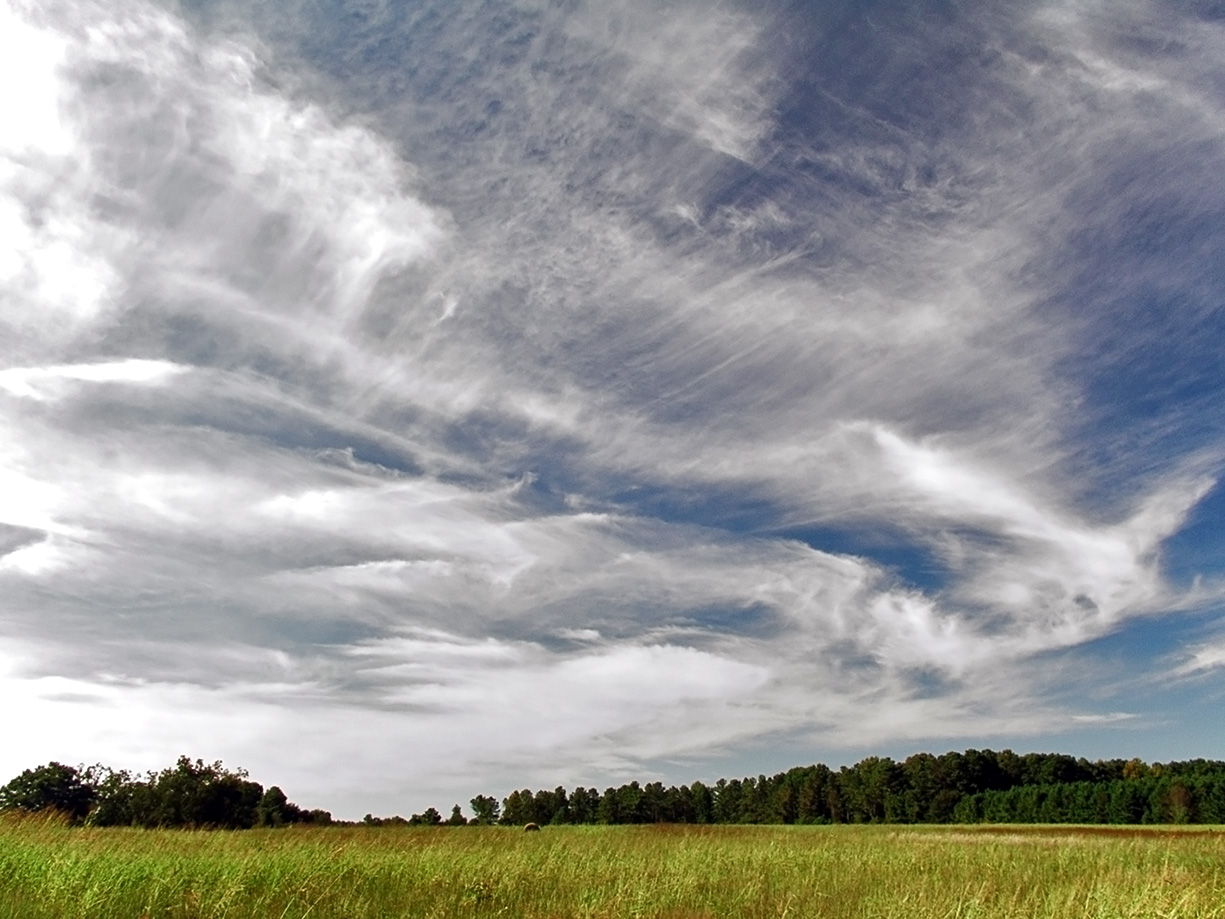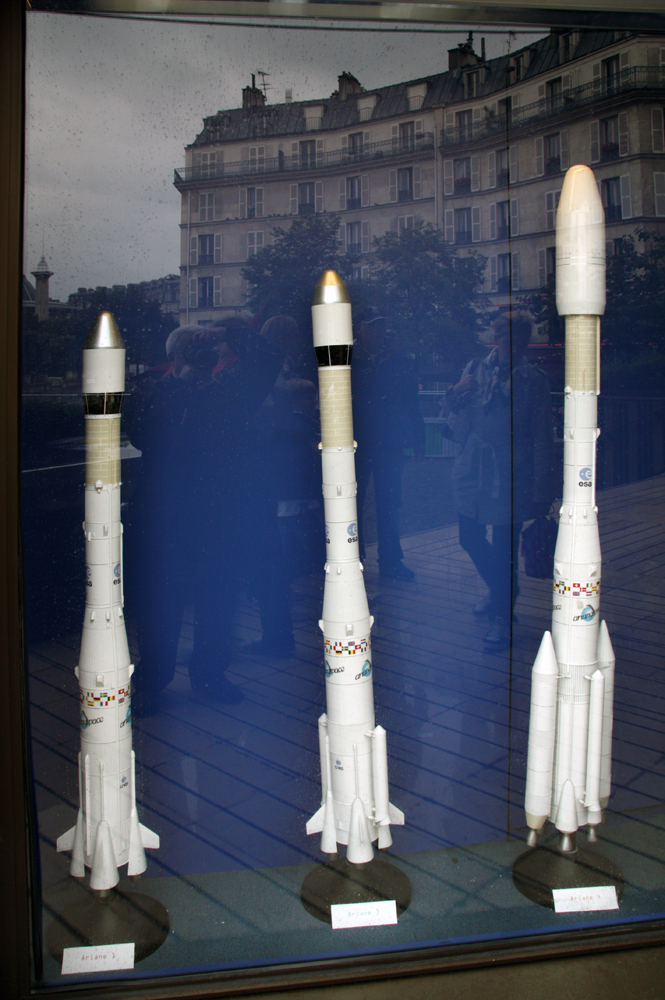|
CALIPSO
CALIPSO is a joint NASA (USA) and CNES (France) environmental satellite, built in the Cannes Mandelieu Space Center, which was launched atop a Delta II rocket on April 28, 2006. Its name stands for Cloud-Aerosol Lidar and Infrared Pathfinder Satellite Observations. CALIPSO Launched Alongside CloudSat. Passive and active remote sensing Instruments on board the CALIPSO satellite monitor aerosols and clouds 24 hours a day. CALIPSO is part of the " A Train", flying in formation with several other satellites ( Aqua, Aura and CloudSat). Mission Three instruments: * Cloud-Aerosol Lidar with Orthogonal Polarization (CALIOP) - a lidar that provides high-resolution vertical profiles of aerosols and clouds. * Wide Field Camera (WFC) - a modified version of the commercial off-the-shelf Ball Aerospacebr>CT-633 star tracker camera. It was selected to match band 1 of the MODIS instrument on the Aqua satellite. * Imaging Infrared Radiometer (IIR) - used to detect cirrus cloud emissivity and par ... [...More Info...] [...Related Items...] OR: [Wikipedia] [Google] [Baidu] |
A-train (satellite)
The A-train (from Afternoon Train) is a satellite constellation of four Earth observation satellites of varied nationality in sun-synchronous orbit at an altitude of slightly variable for each satellite. The orbit, at an inclination of 98.14°, crosses the equator each day at around 1:30 pm solar time, giving the constellation its name (the "A" stands for "afternoon") and crosses the equator again on the night side of the Earth, at around 1:30 am. They are spaced a few minutes apart from each other so their collective observations may be used to build high-definition three-dimensional images of Earth's atmosphere and surface. Satellites Active The train, , consists of three active satellites: * OCO-2, lead spacecraft in formation, replaces the failed OCO and was launched for NASA on July 2, 2014. * GCOM-W1 "SHIZUKU", follows OCO-2 by 11 minutes, launched by JAXA on May 18, 2012. * Aura, a multi-national satellite, lags OCO-2 by 19 minutes, launched for NASA on July 15, 2004. ... [...More Info...] [...Related Items...] OR: [Wikipedia] [Google] [Baidu] |
Earth Observing System
The Earth Observing System (EOS) is a program of NASA comprising a series of artificial satellite missions and scientific instruments in Earth orbit designed for long-term global observations of the land surface, biosphere, atmosphere, and oceans. Since the early 1970s, NASA has been developing its Earth Observing System, launching a series of LANDSAT satellites in the decade. Some of the first included Passive-Microwave imaging in 1972 through the Nimbus 5 Satellite. Following the launch of various satellite missions, the conception of the program began in the late 80s and expanded rapidly through the 90s. Since the inception of the program, it has continued to develop to what we can collect in data today, including; land, sea, radiation and atmosphere. Collected in a system known as EOSDIS, NASA uses this data in order to study the progression and changes in the biosphere of Earth. The main focus of this data collection surrounds climatic science. The program is the centrepiece ... [...More Info...] [...Related Items...] OR: [Wikipedia] [Google] [Baidu] |
Aqua (satellite)
Aqua (EOS PM-1) is a NASA scientific research satellite in orbit around the Earth, studying the precipitation, evaporation, and cycling of water. It is the second major component of the Earth Observing System (EOS) preceded by Terra (launched 1999) and followed by Aura (launched 2004). The name "Aqua" comes from the Latin word for water. The satellite was launched from Vandenberg Air Force Base on May 4, 2002, aboard a Delta II rocket. Aqua operated in a sun-synchronous orbit as the third in the satellite formation called the " A Train" with several other satellites (OCO-2, the Japanese GCOM W1, PARASOL, CALIPSO, CloudSat, and Aura) for most of its first 20 years; but in January 2022 Aqua left the A-Train (as CloudSat, CALIPSO and PARASOL had already done) when, due to its fuel limitations, it transitioned to a free-drift mode, wherein its equatorial crossing time is slowly drifting to later times, from its tightly controlled orbit. Mission Aqua is one of NASA's missions for ... [...More Info...] [...Related Items...] OR: [Wikipedia] [Google] [Baidu] |
Cirrus Cloud
Cirrus ( cloud classification symbol: Ci) is a genus of high cloud made of ice crystals. Cirrus clouds typically appear delicate and wispy with white strands. Cirrus are usually formed when warm, dry air rises, causing water vapor deposition onto rocky or metallic dust particles at high altitudes. Globally, they form anywhere between above sea level, with the higher elevations usually in the tropics and the lower elevations in more polar regions. Cirrus clouds can form from the tops of thunderstorms and tropical cyclones and sometimes predict the arrival of rain or storms. Although they are a sign that rain and maybe storms are on the way, cirrus themselves drop no more than falling streaks of ice crystals. These crystals dissipate, melt, and evaporate as they fall through warmer and drier air and never reach ground. Cirrus clouds warm the earth, potentially contributing to climate change. A warming earth will likely produce more cirrus clouds, potentially resulting in a self ... [...More Info...] [...Related Items...] OR: [Wikipedia] [Google] [Baidu] |
CloudSat
CloudSat is a NASA Earth observation satellite, which was launched on a Delta II rocket on April 28, 2006. It uses radar to measure the altitude and properties of clouds, adding to information on the relationship between clouds and climate in order to help resolve questions about global warming. It has been in daytime-only operations since 2011 due to battery malfunction, requiring sunlight to power the radar. The mission was selected under NASA's Earth System Science Pathfinder program in 1999. Ball Aerospace & Technologies Corp. in Boulder, Colorado, designed and built the spacecraft. CloudSat's primary mission was scheduled to continue for 22 months in order to allow more than one seasonal cycle to be observed. Instrument The main instrument on CloudSat is the Cloud Profiling Radar (CPR), a 94-GHz nadir-looking radar that measures the power backscattered by clouds as a function of distance from the radar. The radar instrument was developed at NASA's Jet Propulsion Lab ... [...More Info...] [...Related Items...] OR: [Wikipedia] [Google] [Baidu] |
Centre National D'Etudes Spatiales
The (CNES; French: ''Centre national d'études spatiales'') is the French government space agency (administratively, a "public administration with industrial and commercial purpose"). Its headquarters are located in central Paris and it is under the supervision of the French Ministries of Defence and Research. It operates from the Toulouse Space Centre and the Guiana Space Centre, but also has payloads launched from space centres operated by other countries. The president of CNES is Philippe Baptiste. CNES is a member of Institute of Space, its Applications and Technologies. It is Europe's largest and most important national organization of its type. History CNES was established under President Charles de Gaulle in 1961. It is the world's third oldest space agency, after the Soviet space program (Russia), and NASA (United States). CNES was responsible for the training of French astronauts, until the last active CNES astronauts transferred to the European Space Agency in ... [...More Info...] [...Related Items...] OR: [Wikipedia] [Google] [Baidu] |
List Of Spaceflights (2006)
This article outlines notable events occurring in 2006 in spaceflight, including major launches and EVAs. 2006 saw Brazil, Iran, and Sweden all get a national into space for the first time. Launches , colspan=8, January , - , colspan=8, February , - , colspan=8, March , - , colspan=8, April , - , colspan=8, May , - , colspan=8, June , - , colspan=8, July , - , colspan=8, August , - , colspan=8, September , - , colspan=8, October , - , colspan=8, November , - , colspan=8, December , - Deep Space Rendezvous in 2006 EVAs Orbital launch summary By country By rocket By family By type By configuration By launch site By orbit References Footnotes {{Orbital launches in 2006, state=expand Spaceflight by year ... [...More Info...] [...Related Items...] OR: [Wikipedia] [Google] [Baidu] |
CNES
The (CNES; French: ''Centre national d'études spatiales'') is the French government space agency (administratively, a "public administration with industrial and commercial purpose"). Its headquarters are located in central Paris and it is under the supervision of the French Ministries of Defence and Research. It operates from the Toulouse Space Centre and the Guiana Space Centre, but also has payloads launched from space centres operated by other countries. The president of CNES is Philippe Baptiste. CNES is a member of Institute of Space, its Applications and Technologies. It is Europe's largest and most important national organization of its type. History CNES was established under President Charles de Gaulle in 1961. It is the world's third oldest space agency, after the Soviet space program (Russia), and NASA (United States). CNES was responsible for the training of French astronauts, until the last active CNES astronauts transferred to the European Space Agency ... [...More Info...] [...Related Items...] OR: [Wikipedia] [Google] [Baidu] |
Cannes Mandelieu Space Center
The Cannes Mandelieu Space Center is an industrial plant dedicated to spacecraft manufacturing, located in both the towns of Cannes and Mandelieu in France. After a long history in aircraft manufacturing, starting in 1929, the center became increasingly involved in aerospace activities after the Second World War, and satellites are now the plant's main product. After having been the Satellite Division of Aérospatiale, then Alcatel Space in 1998, then Alcatel Alenia Space in 2005, the center is now part, since April 10, 2007, of Thales Alenia Space and the headquarters of the company. Main products As prime contractor * the series of Meteosat first and second generation * the series of communication satellites Spacebus * the series of Globalstar's second-generation satellites * the series of O3b satellites * the Infrared Space Observatory * the Huygens space probe, which landed on Titan * the Proteus series of small low earth orbit satellites, including ** the COROT satel ... [...More Info...] [...Related Items...] OR: [Wikipedia] [Google] [Baidu] |
Earth Observation Satellites Of The United States
Earth is the third planet from the Sun and the only astronomical object known to harbor life. While large volumes of water can be found throughout the Solar System, only Earth sustains liquid surface water. About 71% of Earth's surface is made up of the ocean, dwarfing Earth's polar ice, lakes, and rivers. The remaining 29% of Earth's surface is land, consisting of continents and islands. Earth's surface layer is formed of several slowly moving tectonic plates, which interact to produce mountain ranges, volcanoes, and earthquakes. Earth's liquid outer core generates the magnetic field that shapes the magnetosphere of the Earth, deflecting destructive solar winds. The atmosphere of the Earth consists mostly of nitrogen and oxygen. Greenhouse gases in the atmosphere like carbon dioxide (CO2) trap a part of the energy from the Sun close to the surface. Water vapor is widely present in the atmosphere and forms clouds that cover most of the planet. More solar energy is rec ... [...More Info...] [...Related Items...] OR: [Wikipedia] [Google] [Baidu] |
NASA
The National Aeronautics and Space Administration (NASA ) is an independent agency of the US federal government responsible for the civil space program, aeronautics research, and space research. NASA was established in 1958, succeeding the National Advisory Committee for Aeronautics (NACA), to give the U.S. space development effort a distinctly civilian orientation, emphasizing peaceful applications in space science. NASA has since led most American space exploration, including Project Mercury, Project Gemini, the 1968-1972 Apollo Moon landing missions, the Skylab space station, and the Space Shuttle. NASA supports the International Space Station and oversees the development of the Orion spacecraft and the Space Launch System for the crewed lunar Artemis program, Commercial Crew spacecraft, and the planned Lunar Gateway space station. The agency is also responsible for the Launch Services Program, which provides oversight of launch operations and countdown m ... [...More Info...] [...Related Items...] OR: [Wikipedia] [Google] [Baidu] |





